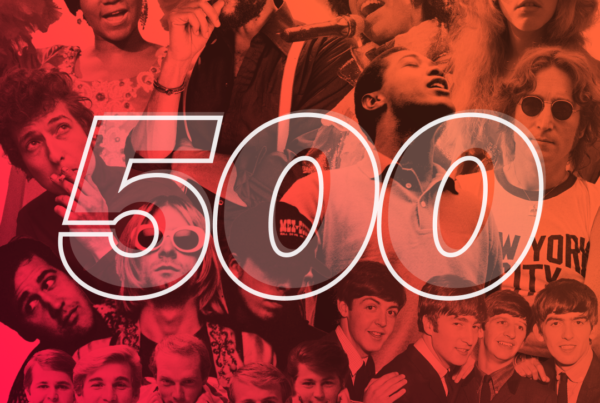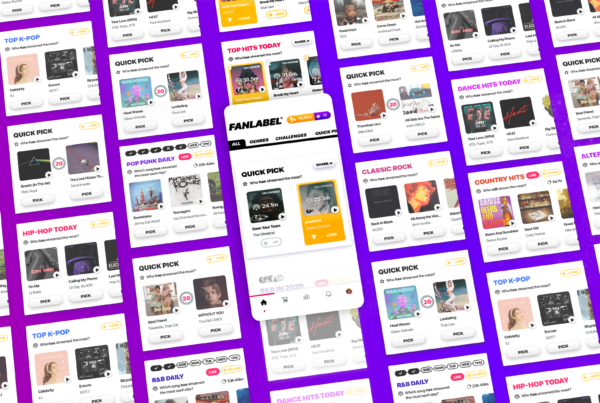With all of the technology available now in 2020, there’s no limit when it comes to innovation within the music industry.
FanLabel is a music gamification app, and that means data, trends and technology are near and dear to our hearts. We closely follow these trends in order to provide our players with the best fantasy record label experience possible. So, while it’s impossible to know exactly what the future may bring, we can talk about music’s current state and make some predictions for what’s next.
Let’s dive in!
In 2019, streaming numbers hit 1 trillion in the United States. Can this be surpassed in 2020?
For the first time in history, streams hit the 1 trillion barrier in the United States, per BuzzAngle’s 2019 year-end report. Think about how large that number is for a second, and you may find yourself taken aback. This metric couldn’t possibly account for multiple people listening to a song on the same device at the same time, either, so perhaps streaming’s reach is even greater.
The obvious question is, will that number continue to increase in 2020, or will it start to level out? Even if streaming numbers merely maintain that figure, it still speaks volumes of how streaming services have not only disrupted the industry, but have essentially rewritten it. Anybody, anywhere, at any time (with an internet connection and a speaker) can listen to any song their heart desires.
However, while the total number of streams has risen, streaming (both audio and video) growth has actually slowed down, according to BuzzAngle. In 2018, streams rose by 42 percent from the previous year. Now, comparing 2019 to 2018, growth is down nearly 30 percent overall. This has also affected the growth of revenue produced from streams, leaving some to wonder if the market is becoming oversaturated.
Streaming is the present. Is it also the future?
Listen, streaming platforms dominate music consumption, as we’ve illustrated above. But is streaming sustainable?
We already mentioned how streaming growth is decreasing, but profit margins are notoriously low for streaming companies. Spotify took more than a dozen years to turn its first profit. Holding rights to music and paying royalties to hundreds of thousands of artists (insert jokes about how little money artists actually make from streaming) gets really expensive. However, Spotify held its ground and turned in a profit 30 times larger than expected in Q3 of 2019. That’s just the second time the company was profitable in its history.
Why the sudden turnaround? One reason is because Spotify has remained loyal to its customers by not raising subscription prices, and offering different subscription tier options. In return, Spotify now has more than 113 million premium users, which is the most of all streaming giants.
Spotify is a little bit different than platforms like Apple Music, Google Play Music or Amazon Music, which all make massive amounts of money from other product sales and can afford to absorb losses. Spotify has remained afloat despite several years of profit losses, and in the process has built an engaged and loyal customer base that is more than willing to pay for premium membership. Spotify is going to be here for the foreseeable future, and since this is a copycat business model, so will its competitors.
No matter what streaming platform you’re tuning in to, these services cater to several needs. In addition to being able to listen to your favorite songs on-demand, streaming gives users instant gratification, offers music discovery opportunities and provides options for ad-free listening to premium members.
It’s no wonder then that other large media industries, such as television, have jumped on the streaming bandwagon. Not only is streaming the present, it is also the future.
Sales are down across the board… except for vinyl
The streaming age is essentially making physical and digital sales obsolete. Why pay for something when you can listen to it for free by streaming?
According to BuzzAngle’s year-end report, sales took a nosedive in 2019, as did individual song sales. In 2018, album sales made up 17 percent of music consumption. In 2019, the number dipped down to about 12 percent of music consumption. Album sales themselves dropped by 23 percent from 2018. Meanwhile, song sales dropped by 26 percent, and digital downloads were down nearly 27 percent. Unsurprisingly, physical album sales dropped by about 21 percent.
Interestingly, the one physical good where sales are strong is LP vinyl. We’re not sure if that’s because people are into the nostalgic feeling vinyl provides, its sound quality, or the fact that new artists are releasing vinyl more frequently, but whatever the reason, vinyl remains popular in 2020.
In 2019, vinyl saw double-digit growth, up 10.5 percent from 2018, with 10.7 million sold. In fact, vinyl sales made up 19.2 percent of all physical album sales… impressive!
But what’s next?
In addition to what we’ve already covered, there are some interesting routes the music industry may take this coming year and beyond.
Some of these areas include music discovery, the increased use of technology at live events and more interactive artist-to-fan relationships.
For example, companies are coming up with subscription models for fans to directly support artists, as well as interact with them, for as low as $1 per year. Also, artists are now beginning to provide direct solutions for ticket sales to fight scalpers, share profits with worthy causes and put the power of concert ticket sales back into the hands of the artists and the fans themselves. All of this and so much more is happening right before our eyes (and ears).
Consider this your recap of where the music industry currently stands, and our predictions for where it is heading in 2020.
Be sure to download the FanLabel app to spot these upcoming trends and keep up with everything we’re doing!





